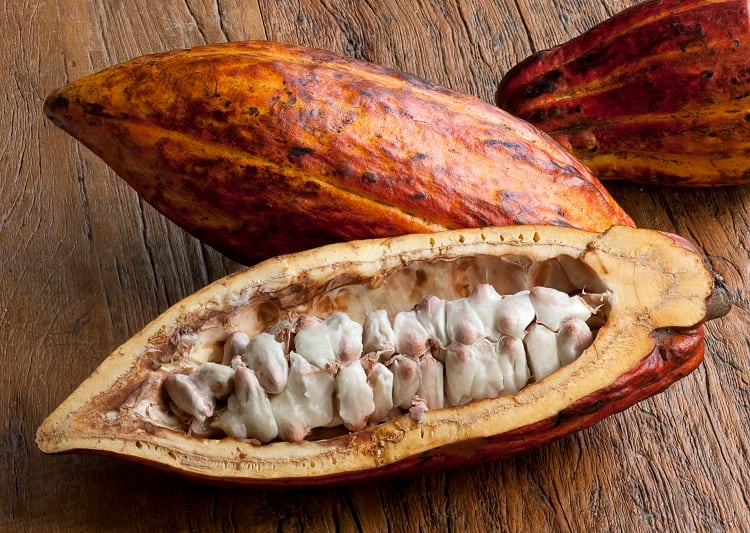Wines have been made from grapes for centuries, and any fan of wine will happily tell you, they’re delicious! But it doesn’t hurt to try something new… enter blueberry wine. Or should we say, welcome back blueberry wine?! Because it's far from new, in fact, it’s ancient.
The origins of blueberry wine
Known as ‘sun wine’, blueberry wine was created in a remote region of northern Sweden in the 16th century. The makers filled a bottle with blueberries, water and sugar, and let it stand in the sun, creating a natural fermentation process and inspiring its name.
However, this variation on traditional wine made from grapes has only recently begun to spread across Europe, gaining interest with a wider audience and inspiring winemakers to diversify.
In 2014, Peter and Zoe Mee, owners of Lyveden Farm in England, were looking for ways to ensure their business would be able to support the next generation, saying they, "had to diversify". They planted 15 hectares of blueberries under polytunnels and installed a new blueberry processing facility, in order to create a range of blueberry-based products, including their 'Blueberry Bliss Sparkling Wine'.
"We wanted a way for people to celebrate British blueberries all year," Emily Mee, business development manager of Mee Blueberries at Lyveden Farm, told FoodNavigator. "We love drinking sparkling rose's in the sunshine and love the fruity notes you get from wines. After seeing a rhubarb fizz, we felt it must be possible to do a blueberry sparkling. Biddenden Vineyards, who press our blueberries for juice, were just as excited as we were at the prospect of a blueberry fizz and agreed to give it a go."

What are the benefits of blueberry wine?
Blueberries have been linked to a whole host of health benefits, from reducing DNA damage to helping to protect against cancer, so it’s unsurprising that blueberry wine has been linked to a similar range of health benefits. In fact, a new study on blueberry wine indicates that it maintains many of the original fruit’s beneficial compounds throughout the production process, though fermentation and temperature settings will influence the final nutrient content.
What are the health benefits of blueberries?
Blueberries are small, nutrient-rich berries, often referred to as a ‘superfood’. They contain vitamins A, D, and E, folic acid, minerals such as phosphorus, potassium, and magnesium, and organic acids such as hydroxycinnamic and hydroxybenzoic. Furthermore, they are an important source of bioactive compounds such as flavonoids, believed to have a positive effect the body.
Researchers at ACS Food Science & Technology in Washington DC examined the effects of fermentation on the bioactive compounds and antioxidant activity in blueberries. The results suggest that blueberry wine maintains many of the fruit’s nutrients, with the team identifying ways to optimise components in this so-called superfood.
The effects of the vinification process, specifically fermentation and heat, on these compounds and their antioxidant activity had not previously been studied. So, Maria Serratosa and her research colleagues tested how these variables affect the nutritional value of blueberry wine.
They began their investigation with eight litres of blueberry juice from fruit grown in southern Spain and separated it into one-litre flasks. The researchers placed four flasks in a 63-degree Fahrenheit water bath and the other four flasks in a 70-degree Fahrenheit water bath. Two flasks in each water bath underwent a complete fermentation process, to produce dry wine, and the other two flasks underwent a partial fermentation process to produce sweet wine. They then measured and compared bioactive compound levels in the initial juice and in the final product.
Results showed that anthocyanins, tannins, and flavanol concentrations decreased with longer fermentation times. Conversely, levels of flavan-3-ol increased with fermentation time. However, fermentation time did not appear to affect the amount of vitamin C in the wines, though temperature did have an impact, with wine kept at 70-degrees Fahrenheit containing approximately half as much vitamin C as wine kept at 63-degrees Fahrenheit. Additionally, while antioxidant levels generally decreased, all wines still exhibited higher antioxidant activity than the initial blueberry juice.
The team concluded that overall, fermenting blueberry juice can create a wine that maintains the benefits of blueberries, but temperature and fermentation time can influence the nutrient content of the final product.
Suitable for people on a low-histamine diet
While wines made from grapes are high in histamine, and should therefore be avoided by people on a low-histamine diet, blueberry wine is suitable for consumers with a histamine intolerance. The reason for this being that blueberries are low in histamine. In fact, Swedish winemaker New Nordic Beverage markets its wines – made with wild blueberries and lingonberries – as a “histamine-free alternative” to grape wines.
What is the low-histamine diet?
The low-histamine diet is an elimination diet, which focuses upon the removal of foods which are high in histamine or trigger the release of histamine within the body. It is designed for people who are histamine intolerant.
Examples of foods high in histamine include processed meats, aged cheeses, legumes and citrus fruit. Fermented Foods are also considered to be high in histamine, though the level of histamine in fermented foods can fluctuate based on preparation techniques and the length of aging.
Additionally, coffee, wine (made from grapes), beer and cider are all high in histamine.

Innovation in winemaking
As well as blueberries, winemakers across the world are experimenting with alternative ingredients as a base for their wine. Just recently, LOV Ferments launched its Cocoa Wine named ‘26’ and made using cocoa mucilage, the pulp which surrounds cocoa beans in the pod.
“Great wines are not only based on the grape but on the process,” said Nicolas Lavalliere, CEO and co-founder of LŌV ferments, while speaking at the Desafía FoodTech event in London. “We believe that it’s the fermentation that creates the beverage.”




